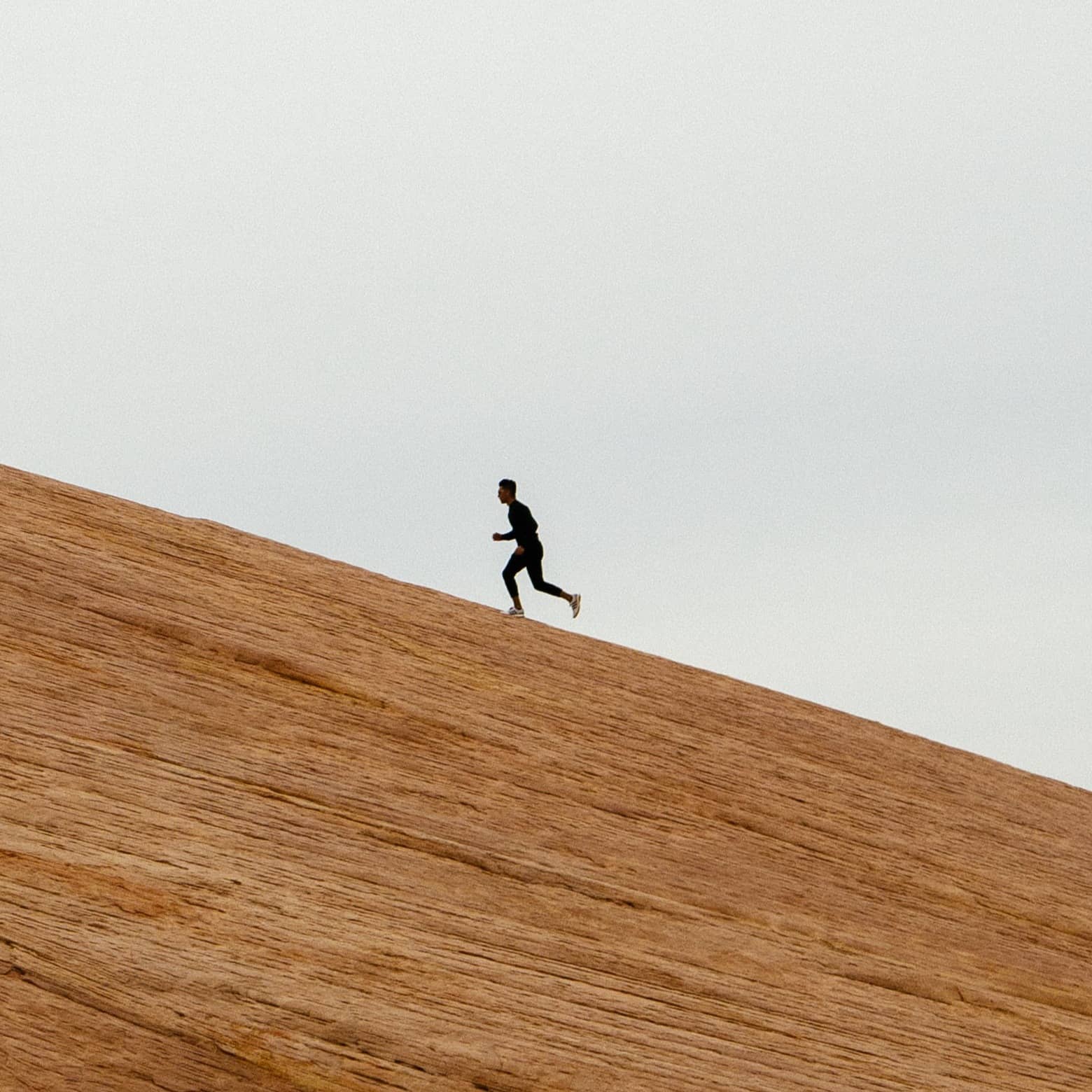Steve's Story

REDs is a complex condition, but it all boils down to a simple mismatch between energy intake and expenditure. This phenomenon is not reserved for the upper echelons of elite sport, nor for the extremely lean or underweight. For those teetering on the edge of underfueling, the slow creep of REDs symptoms can subtly take effect, while perhaps being chalked up as a “normal” outcome of an athletic lifestyle. That was Steve Chamberlin’s experience.
Steve describes his REDs journey as a “long arc”. Now a retired US Coast Guard Officer in his mid-50s, his athletic journey began with a New Year’s resolution to pick up running in 1983. Amidst a boom in the popularity of endurance sports, particularly at the amateur level, his reading of Jim Fixx’ ‘The Complete Book of Running’ proved to be a gateway into competitive triathlon. Meanwhile, alongside this exercise boom, physicians and the mainstream media in the ‘80s evangelised the importance of a low-fat diet to combat chronic diseases like heart disease and diabetes.
The fusion of this messaging on a “healthy” diet, a general anxiety disorder and Steve’s new passion for triathlon quickly led him into a sharp U-turn away from health and performance. “I became a fanatical triathlete and equally fanatical in managing my diet,” he said. “This spiralled into life-threatening weight loss and a clinical eating disorder. I became increasingly obsessed with competing, and I isolated myself socially to the point that my high school and college years were basically lost.”
“Dieting and triathlon gave me a sense of control that I lacked in my homelife. However, once the eating disorder had a grip on me, I lacked the skill, insight and awareness to pull myself out.”
Jumping ahead to his late 20s, Steve had “somehow managed to obtain a healthy weight”, though he would continue to be “weird” about food long after. There were few opportunities for eating disorder treatment at that time and, particularly for men, the topic was surrounded with stigma. He kept his weight stable, but his internal dialogue and calculated approach towards eating remained disordered.
In 2020, the pandemic unintentionally coincided with a decision to adopt a nomadic lifestyle, living out of an Airstream trailer while touring the US. Remember how hard it was to find toilet paper in the spring of 2020? Bare shelves in supermarkets became emblematic of our collective anxiety, fueled also by interruptions to the supply chain.
Consequently, it became especially difficult for Steve to stick to his rigid rules around food while on the road, allowing a slow and steady energy deficit to form. Without realising, he shed a significant amount of weight, and in his words, the fatigue that ensued “sapped me of energy, spiked my anxiety and essentially sucked the joy out of my life”.
When he finally sought medical attention, the test results were grim. “I learned that my pituitary gland had shut down and, as a result, my testosterone was critically low. To top it off I learned that I have severe osteoporosis, which, I am sure, had its roots in my adolescent ED.”
Steve has been working with an endocrinologist to combat the deterioration of his bone mass, but managing his ED and the resulting impacts of REDs remains a challenge. “It has a steely and relentless grip.”
Considering his experience and the misunderstandings about REDs in the amateur population, Steve first pointed to awareness. Though he’d been a runner and triathlete for nearly 40 years, Steve had not heard the acronym REDs until his search for the answer to his extreme fatigue in 2020. He also emphasised the importance of discussing the overlap between anxiety and eating disorders, which often underlie REDs, and noted the false perception that both eating disorders and REDs primarily affect women.
“While it is best known for its impact on elite athletes,” he added, “I have to assume (but don’t have the data to assert) that there are far more non-elite athletes / ordinary people who are suffering from REDs but go undiagnosed and untreated.”
As he works through the implications of osteoporosis long after his body’s peak in ability to accrue bone density, his feelings on disordered eating and endurance sport are sombre. If he could go back in time to 1983, he would abandon his New Year’s resolution at the start. “I would have steered myself away from the endurance sport culture altogether. While I did receive fulfilment from it, the cost was too dear.”
Let’s learn from Steve’s experience and help craft a better future for athletes across all ages, genders, sports, and levels of competition.
Our goal at Project REDs is to change the game by increasing awareness, and providing resources for prevention, and recovery. Join us as we bring together a multidisciplinary team of experts to help elite and amateur athletes alike chase their goals and find fulfilment in sport, without compromising their long-term health and wellbeing.
For more on Steve’s story, check out his essay “The Steel Grip of Disordered Eating” on Medium.
by Steve Chamberlin & Rachel Bachman-Perkins